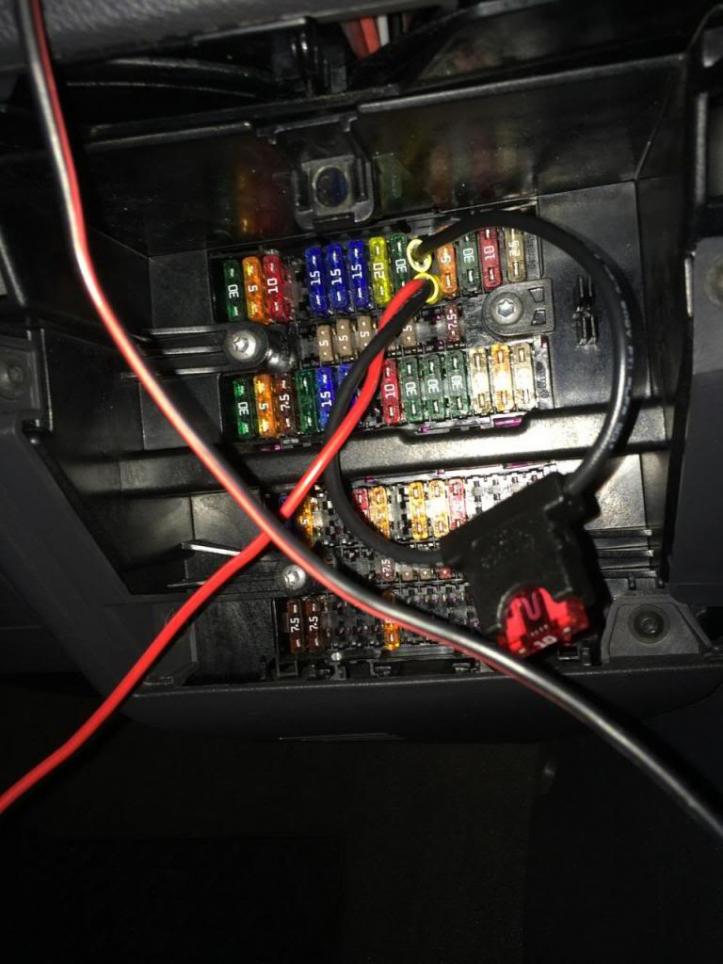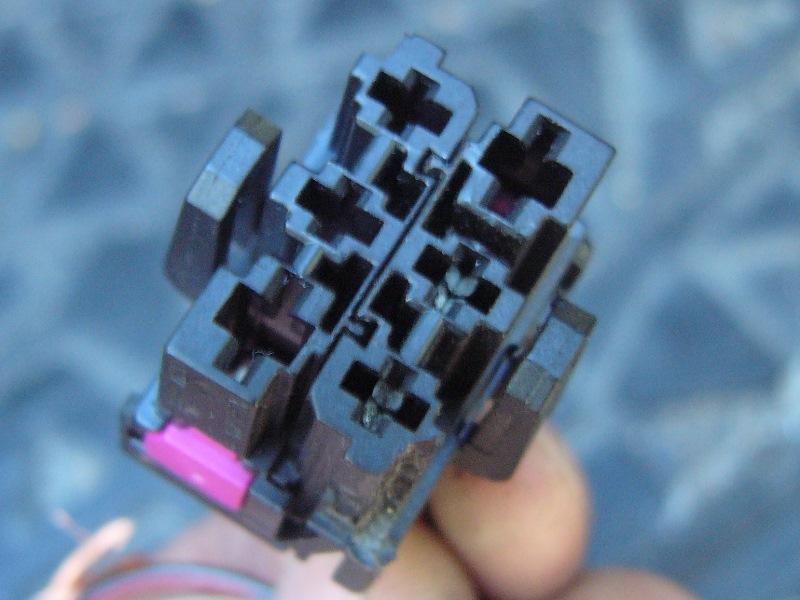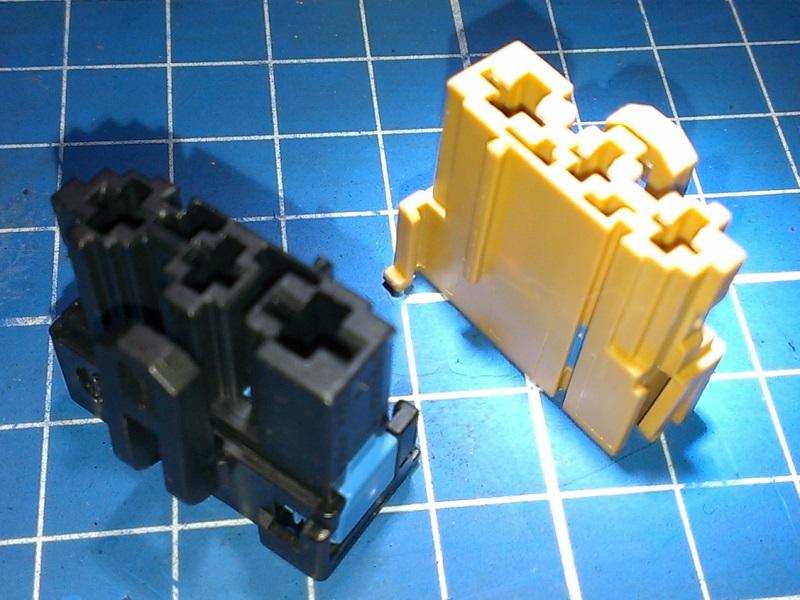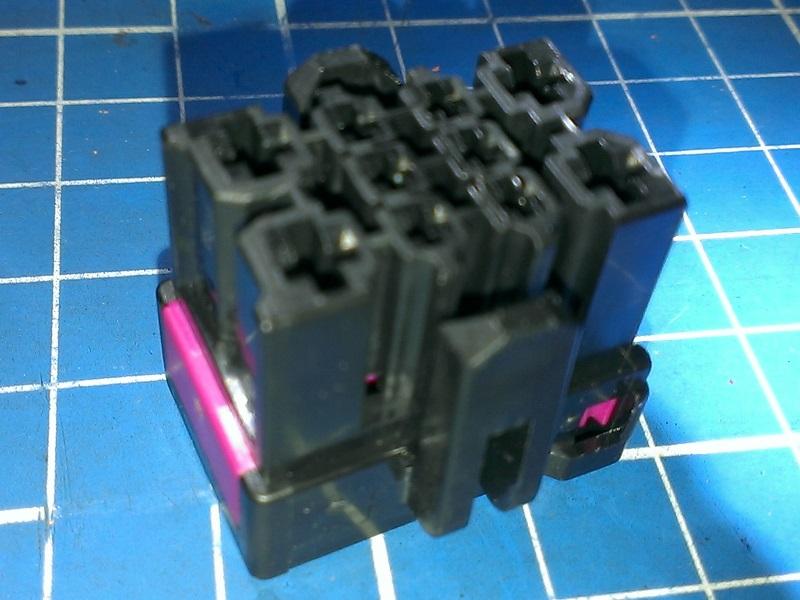So... I'm attempting to hardwire in a dashcam into the van and have run into a small problem. Ordinarily the cigarette lighter socket is switched... but not in the vans it seems.
So I'm looking for a switched power line I could tap into but am failing miserably. I'd happily accept some guidance if someone could point me to a wire I could tap...
Plan B was to tap something at the fuse box, but I'm not entirely sure how to get behind it. Which leads me to plan B option 2.
Use a piggyback fuse, which has me wondering and I want to get a second opinion before I go ahead with this.
So my understanding is that the BOTTOM of the fuse goes to the device and the top is the power supply (with the fuse in between).
By using two spade connectors in this picture, I have put a fuse inline where it is supposed to be.
Then by adding in an extra wire to the BOTTOM of the socket I'm essentially adding extra load across the normal 10A fuse?? Correct??

If I was to swap the two connectors around, am I right in saying I would then end up with a normally fused connection for that socket but a complete unfused additional line?
If my assumption is correct, could I then simply add an inline fuse to that new line I'd just tapped in and essentially create a whole new circuit? Is there any issue with doing this? (again it's for a charger for a dash cam, which would be a maximum of 2.1A @ 5v so not a huge load).
I'm assuming this is just a distribution block and I'm essentially doing something similar to adding a new fuse properly (from behind) but a little hacky and on the front?
for what it's worth, I'm looking at using fuse position #10 if that makes any difference at all: 10-Fuse -10 A- Intermittent wiper switch -E22- 15- Rear wiper switch -E34- -Intermittent wiper regulator -E38-
So I'm looking for a switched power line I could tap into but am failing miserably. I'd happily accept some guidance if someone could point me to a wire I could tap...
Plan B was to tap something at the fuse box, but I'm not entirely sure how to get behind it. Which leads me to plan B option 2.
Use a piggyback fuse, which has me wondering and I want to get a second opinion before I go ahead with this.
So my understanding is that the BOTTOM of the fuse goes to the device and the top is the power supply (with the fuse in between).
By using two spade connectors in this picture, I have put a fuse inline where it is supposed to be.
Then by adding in an extra wire to the BOTTOM of the socket I'm essentially adding extra load across the normal 10A fuse?? Correct??

If I was to swap the two connectors around, am I right in saying I would then end up with a normally fused connection for that socket but a complete unfused additional line?
If my assumption is correct, could I then simply add an inline fuse to that new line I'd just tapped in and essentially create a whole new circuit? Is there any issue with doing this? (again it's for a charger for a dash cam, which would be a maximum of 2.1A @ 5v so not a huge load).
I'm assuming this is just a distribution block and I'm essentially doing something similar to adding a new fuse properly (from behind) but a little hacky and on the front?
for what it's worth, I'm looking at using fuse position #10 if that makes any difference at all: 10-Fuse -10 A- Intermittent wiper switch -E22- 15- Rear wiper switch -E34- -Intermittent wiper regulator -E38-









Comment